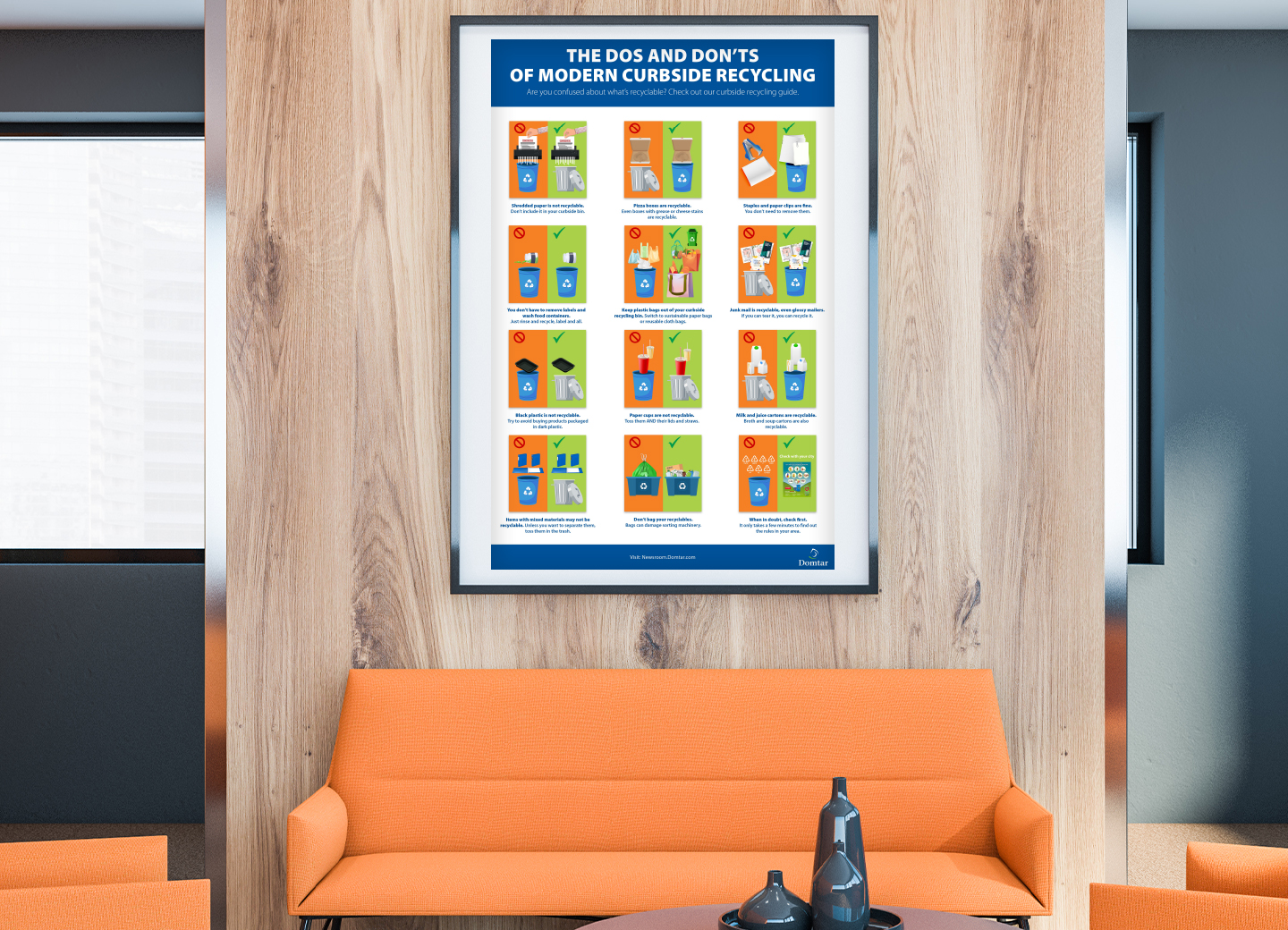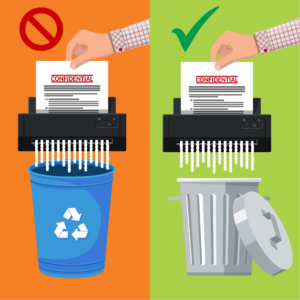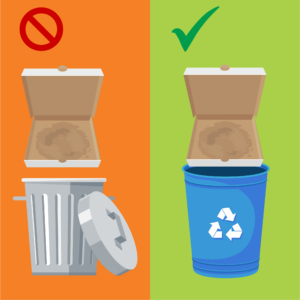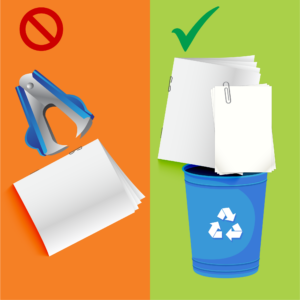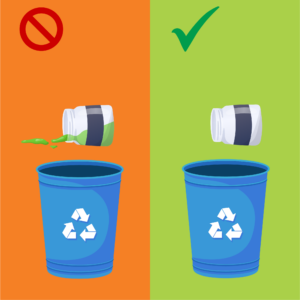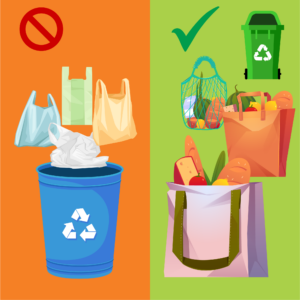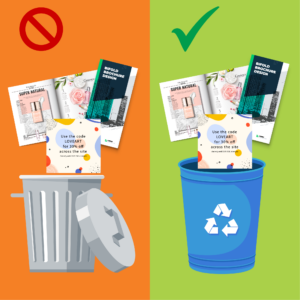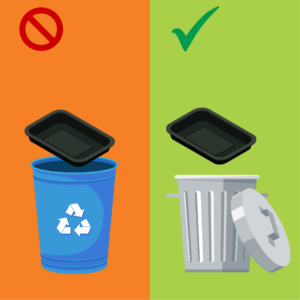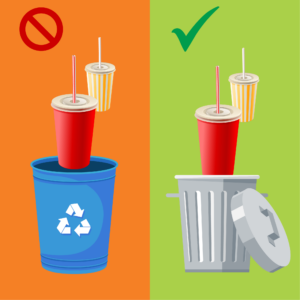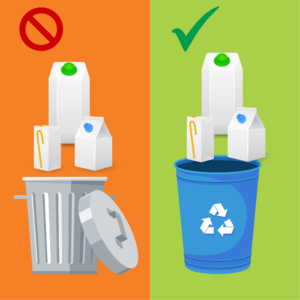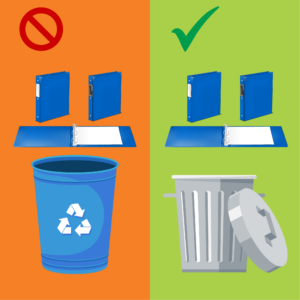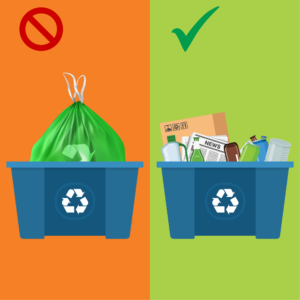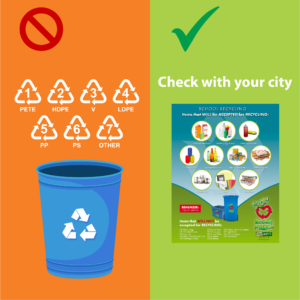Recycling is part of American culture, with 94 percent of those surveyed saying they support it, and 74 percent saying it should be a top priority. Yet only half of Americans have access to curbside recycling, and many of those well-meaning recyclers go about it the wrong way. As a result, far too many items that could be recycled end up in a landfill.
One of the barriers to proper curbside recycling is simply a lack of knowledge about how to do so correctly. That can lead people to either toss something that could have been recycled, or to wishcycle, meaning they put something in their recycling bin that isn’t actually recyclable.
Our updated curbside recycling guide can help clear the air on what is and isn’t recyclable these days.
Download and print this helpful infographic, or click through our gallery below for 12 quick recycling tips. Then, scroll down for more detailed information and links to helpful resources.
Shredded paper is not recyclable.
If paper is recyclable, then shredded paper must be recyclable, right? The answer is a not-so-simple no. Most curbside recycling facilities can’t recycle shredded paper, even if you bundle it in paper bags. It makes a mess, and because the paper has been cut, the fibers may be too short for recycling.
Some document shredding services can recycle paper, so if you have one in your area, you can try that. Another option is to separate only those pages containing personal information and shred those. You can either throw the shreds away or use them in your garden or compost pile. Then, recycle the rest of the papers as usual.
Pizza boxes are recyclable.
The rule of thumb used to be that pizza boxes were not recyclable because they were contaminated with grease. But the American Forest & Paper Association released new guidance in 2020 based on work with its industry partners, all of whom agree that pizza boxes are definitely suitable for curbside recycling programs – grease and cheese included. And who knows? Maybe one of your old pizza boxes will one day find new life at our Kingsport Mill recycled containerboard facility, which is currently under construction.
Staples and paper clips are fine.
If you want to remove staples and paper clips before tossing paper into your curbside recycling bin, you can. But recycling experts agree you can skip that step if you want to. The machinery used to recycle paper can remove those small bits of metal without any problem. That said, you should take a moment to remove binder clips, which are difficult to recycle but can be reused in many creative ways.
You don’t have to remove labels and wash food containers.
Conventional recycling wisdom says to remove labels from glass and metal food containers and thoroughly wash them before recycling. But actually, all you need to do is quickly rinse out any food residue before tossing those glass jars and tin cans into your curbside recycling bin, label and all.
Keep plastic bags out of your curbside recycling bin.
Plastic film — the type used for food wraps and plastic shopping bags — can damage equipment at curbside recycling facilities, so please don’t put it in your bin. However, there are some recycling programs that can accept these materials. Use this website to search for a plastic bag and plastic film drop-off location near you. And to reduce the amount of plastic bags in your home, try switching to paper bags or reusable cloth shopping bags.
Mail is recyclable, even glossy mailers.
Perhaps you’ve heard that glossy paper, such as that found in magazines and on slick advertising mailers, is not recyclable. But actually, it is, as long as you can tear it easily. Just remove any plastic wrappers or plastic-laminated pieces first.
Black plastic is not recyclable.
There are only a few facilities in the United States that have the ability to recycle black plastic on an industrial scale, but they won’t accept household waste, which means Americans have no choice but to toss black and dark-colored plastic, which can be toxic and difficult to sort, into the trash. Now that you know, try to avoid buying products packaged in black and dark plastic that will inevitably end up in the landfill.
Paper cups are not recyclable.
Paper cups are made of paper, so why can’t they be recycled? It’s because paper cups are coated to make them water resistant, and that coating is not recyclable. Some quick-service drinks are served in rigid plastic cups, which might be recyclable in your area. In addition, recycling technology is rapidly changing, and as a result, some mills now accept paper cups for recycling. That change probably hasn’t made it downstream to many curbside recycling programs yet, so be sure to check regularly with your local curbside recycling service to see which cups they will and won’t accept.
Milk and juice cartons are recyclable.
If paper cups aren’t recyclable, why are milk and juice cartons okay? The cartons used for milk, juice and other liquids, such as broth and soup, are known as aseptic packaging, and they are made in such a way that each of the components (paper, plastic and aluminum) are easily separated. Many curbside recycling programs sort and bundle these containers for further processing at an appropriate facility.
Items with mixed materials may not be recyclable.
Unlike aseptic packaging, many items made with different materials can’t be easily separated into their recyclable components. For example, three-ring binders are made of cardboard, plastic and metal, but because they are difficult to separate into their components, most curbside recycling programs don’t accept them. On the other hand, a paper envelope with a small plastic-covered address window can easily be recycled.
And don’t forget – the office paper within your binder can be added to your recycling bin, so long as it is removed from the binder.
Don’t bag your recyclables.
It may be easier to take recyclables to the bin by putting them in a bag first, but don’t do that. Bags, even sustainably produced paper bags, can interfere with the automated sorting machinery and jam equipment at your local recycling facility. As a result, anything in a bag is typically diverted to the landfill, regardless of what’s inside.
When in doubt, check first.
It can be tempting to place everything with a recycling symbol into the curbside bin. But not every recycling program has the equipment to process every type of material, and some municipalities may require you to separate your own recycling into different bins or drop off each type of material at a separate location. Ask your local recycling program which materials they accept and whether they offer single-stream recycling.
